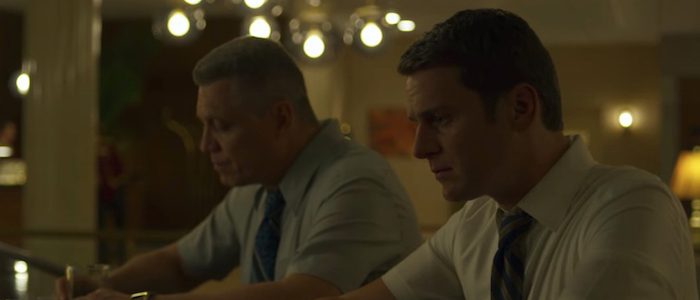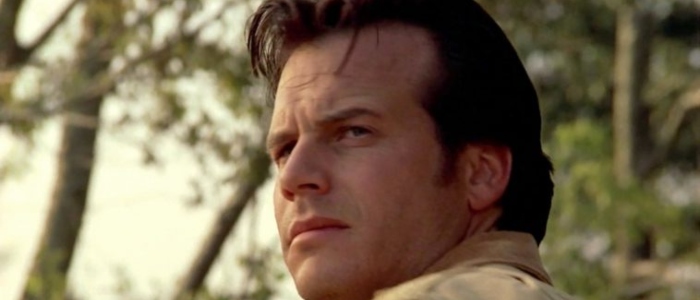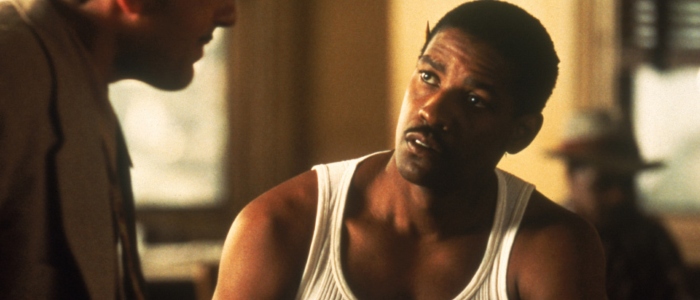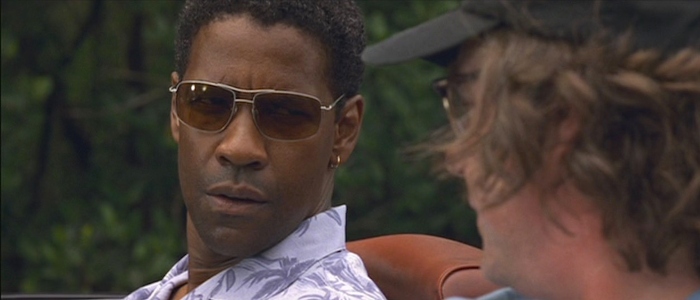
The second season of Netflix’s Mindhunter may have taken two years to arrive, but those of us who’ve already burned through all nine episodes know that it was well worth the wait. Sure, the subplot involving Bill Tench’s (Holt McCallany) adopted hellspawn feels out of place, and yes, Wendy Carr (Anna Torv) gets shafted on screen time and relevance, but the series as a whole remains a mesmerizing watch. Sharp writing and fantastic performances are a big part of the show’s success, but as is often the case with visual mediums the direction is key.
David Fincher returns as one of the show’s driving forces – he directed four episodes of the first season, three this time around, and is responsible for setting the show’s precise late 70s tone – and he’s joined by Andrew Dominik (Killing Them Softly) who helms two. The season’s final four episodes, though, are directed by Carl Franklin, and while his work aligns with Fincher’s (and show creator Joe Penhall’s) series vision, it also shows a filmmaker working with concepts and conceits already well established within his filmography.
Franklin’s first foray into Hollywood was as a supporting actor in 1973’s Five on the Black Hand Side, and he followed it with a few more film roles and a fairly steady career in television. His move into directing came in the late 80s with a trio of low budget action movies, but it was 1992’s One False Move that marked him as a director to watch. Five more features followed before he shifted to directing television leading to his stint on Mindhunter, and while he dabbled in various types of stories as director a constant throughout much of his work has been an affinity for genre fare with stories about black & white realities, gray moralities, and some very human contrasts. Three of his most memorable films share similar themes and motifs – specifically including race, the criminal mind, powerful violence, and protagonists in way over their head – to varying degrees with his episodes of the serial killer series and highlight Franklin’s very evident attraction to the neo-noir sub-genre.
Mindhunter‘s second season continues to explore the work being done by the FBI’s newly established Behavioral Science division in interviewing convicted killers to glean insight into what makes such people tick, but the season’s back half (Franklin’s episodes) sees the agents officially head out into an active investigation in Atlanta. Both men are white, and their efforts to assist the police in identifying and capturing a killer with a double digit body count of black boys and teens is met with multiple layers of skepticism – their theories are unconventional, but worse, Agent Ford’s (Jonathan Groff) insistence that the killer is also black flies in the face of the already racially fractured city’s beliefs and expectations. His attempts at applying academia and intuition leave him flailing.

One False Move
One False Move also tells a story of murder and emotional violence complicated by race and features a man who on any other day might be considered a hero. It follows two threads as a trio of murderous criminals – a black woman named Lila (Cynda Williams), a black man named Pluto (Michael Beach), and a white man named Ray (Billy Bob Thornton) – head towards a small town in Arkansas leaving a bloody trail behind them. Waiting for them is a pair of homicide detectives (one white, one black) from L.A. and the town’s overly confident and eager to please police chief, Dale Dixon (a terrific Bill Paxton in his first lead role). Dale, a white southerner, is a casual racist who means no ill will with his occasional derogatory slips, but in addition to being a good ol’ boy he’s also hiding his own secret.
Franklin’s Mindhunter episodes show outsiders arriving to help locals who don’t necessarily feel that help is needed, and One False Move takes a similar path with its own study in contrasts set against a dangerous backdrop. Black/white, middle class/poor, cops/crooks, locals/outsiders – each element butts up against its counterpart in ways that amplify conflict and delay resolution. It’s people getting in each other’s way, and while that’s a fairly common method for creating dramatic conflict, Franklin frequently employs it for stories far grimmer than your standard drama or rom-com.
He finds time for a false light in both, though, with sequences showing the time spent waiting for evil to arrive. Holden, Bill, and local FBI Agent Jim Barney (Albert Jones) pass the hours watching Atlanta’s bridges with sleep, food, and diversions while Dale and the others do the same awaiting the incoming killers. Franklin offers a false sense of calm even as he continues to build the dread of what’s on the horizon.
Dale overhears the “big city” cops joking about his podunk ways, and in addition to being too embarrassed to challenge them he also makes the dangerous decision to take on the villains alone in an effort to prove himself worthy. He essentially locks them out of the case with choices complicated further by his hidden relationship with Lila and the mixed child they created together. We know Lila’s a deadly threat by the time their paths cross again (she recently shot a state trooper in the head) but he’s wearing blinders woven from nostalgia, shame, and regret. As with Mindhunter’s Holden, Dale’s belief that he’s right in both his tactics and his past with Lila overpowers his awareness that these other people have their own realities – and they might not include people like him.
As a noir (technically a neo-noir as it takes place outside of the 40s or 50s) the film includes the expected with a “detective” character, a dangerous femme fatale, and a less than happy ending, but in addition to the race elements the film also plays with the locale. Noirs typically take place in the city, and while many offer the tease of a country escape from the dark urban nightmare – think the sun-drenched ending of Fincher’s Seven (1995) or L.A. Confidential’s (1997) promise of redemption in Bisbee, AZ – One False Move shifts it around. The opening slaughter occurs in the city before everyone converges on the rural landscape of AR, and Mindhunter is no stranger to the idea as its mostly city-set episodes open with brief snippets of nightmares unfolding in America’s heartland. Franklin captures the grim violence with equal dread and discomfort regardless of geography.

Devil in a Blue Dress
The slow-building indie success of One False Move landed Franklin his first studio picture, 1995’s Devil in a Blue Dress, an adaptation of Walter Mosley’s debut mystery novel introducing blue collar private eye Easy Rawlins. (There are fourteen books in the series now, and it remains a damn shame that it never became a franchise.) The film follows Easy’s (Denzel Washington) life in post World War II L.A. after losing his factory job and agreeing to scour the city’s black neighborhoods and hangouts for a missing white woman. It should have been an easy $100, but his quest sees violence erupt and blood spill as corrupt cops, shady politicians, and all manner of criminal elements stand in his way.
As should be expected, race plays a pivotal role in Easy’s journey through a divided Los Angeles with populations both openly racist and openly fearful, and as with One False Move, the biracial result of an interacial relationship once again sits at the center of some motivations. He’s a rarity in the late 40s in that he owns his own home – an achievement he’s fighting to hold onto – and while his skin color gains him entry into the city’s black strongholds outside his own neighborhood (something Holden’s investigation takes into account on Mindhunter) and his racial awareness allows him to move through white communities, he remains something of an outsider to the upper class criminality and depravity he’s heading towards. The latter comes courtesy of a white politician in a tight race for city mayor, and the pressure that follows leaves Easy at the mercy of cops who hold all the cards once he’s in their custody. They’re dirty, but they’re also following evidence that suggests Easy might be responsible for the murders he keeps stumbling through.
He’s a good guy thinking he can skate through a simple job but discovers too late that the only thing easy about this case is his name. Like Dale and Holden, he flounders before finding his footing, and it comes at a cost of both blood and innocence. He’s pulled into the violence himself, but Easy inserts a buffer of sorts in the form of an old friend named Mouse (a star-making turn by Don Cheadle) who commits the brunt of the brutality needed for Easy to succeed. Mouse isn’t the villain, but the ease with which he commits cold-blooded murder offers a glimpse into where Easy might have ended up.
Franklin, like Fincher, is an acknowledged fan of Roman Polanski’s Chinatown (1974), and his Devil in a Blue Dress finds similar motivations in its power brokers and evil doers – namely, greed and deviance – but while Polanski’s film leaves both its protagonist and audience shattered Franklin’s takes a step away from the traditionally downer noir ending. It’s tentative, and like the end of Mindhunter’s second season it feels like a small victory in the face of so much loss and uncertainty, but we end on a note of hope.
Easy not only retains his home, but he officially makes the career change into private investigation which goes beyond individual progress to suggest social progress too. The pastoral escape common to noirs is represented here by Easy’s home, front yard, and trees dotting his green patch of land. He’s fighting for it, and in the end we see him celebrating not just his own plot but with the entire neighborhood made up of black homeowners. It’s atypical for both him and the sub-genre, but despite Franklin’s dislike of today’s mandated happy endings he valued the opportunity to create an African American hero on the big screen more.

Out of Time
Franklin’s penultimate feature, and his last as of now to share any connections with Mindhunter and these others, is also his absolute lightest concoction. Out of Time (2003) introduces viewers to a small-town police chief named Matt Whitlock (Denzel Washington) whose beachside community affords him a fairly quiet life. That changes quickly, though, when a lapse in judgement lands him implicated in a series of crimes ranging from fraud to murder. Worse, his soon to be ex-wife (Eva Mendes) is the detective working the case.
This twisty, fast-moving trifle looks like the odd movie out here, at least on the surface, but despite its ultimate weightlessness Franklin infuses it with bursts of violence, gorgeous scenery, and a number of his beloved noir tropes given softer turns. Matt takes on the “case” of a femme fatale – an old high school flame saddled with an abusive husband and a cancer diagnosis – and as with the earlier protagonists, he wades too easily into a deep end filled with secrets and lies thinking he can save someone in need. It’s quickly made clear the water is well over his head, and the body count rises from there. Fans of Roger Donaldson’s brilliant No Way Out (1987) should give it a spin as it presents a similar predicament involving a man in a frantic race to avoid detection by his own investigation.
The criminal elements here are devious, twisted, and quick to murder, but they lack the social relevance and visceral weight of villains in Franklin’s other films. It’s a PG-13 studio release – the earlier two films are both R-rated – meaning the violence is neutered in its intensity. Franklin’s never been one for generic gun fights, though, and is instead more suited for up close and intimate acts of violence. The action is every bit as immediate as he typically delivers while skirting the wince-inducing brutality.
The final marker differentiating it from the others in weight is its approach to race – in that it doesn’t take one. Two interracial couples sit at the center of the story, but that aspect of their relationships is never mentioned or inferred as having any importance. It’s the ideal in some ways as characters are allowed to be individuals instead of representatives, but while it’s absence doesn’t make the film better or worse than the others it does make it simpler.
All three films are fantastic entertainment tracing Franklin’s love for the sub-genre in various forms, but it’s easy to look at Out of Time as the filmmaker giving up on the darker, more affecting aspects. So why is it included here? Because the beats are still present, and the ingredients remain, but they’re used to create fun thrills and pop entertainment – not a bad thing – instead of something heavier. Their presence allows it to sit on the same shelf as One False Move and Devil in a Blue Dress, and its differing intent makes for an interesting bridge between the features and the series. His work on Mindhunter sees him once again take several of the themes found throughout these films and apply them to a dark tale where they feel both effortless and integral, and it’s a beautiful thing to behold. Once you’ve finished the season, do yourself a favor and seek out these three films, and then watch everything else on his IMDB page. Season three of Mindhunter should be arriving by the time you finish it all.
The post American Nightmares: A Primer on the Work of ‘Mindhunter’ Director Carl Franklin appeared first on /Film.
from /Film https://ift.tt/3284lWj
via IFTTT
Comments
Post a Comment